
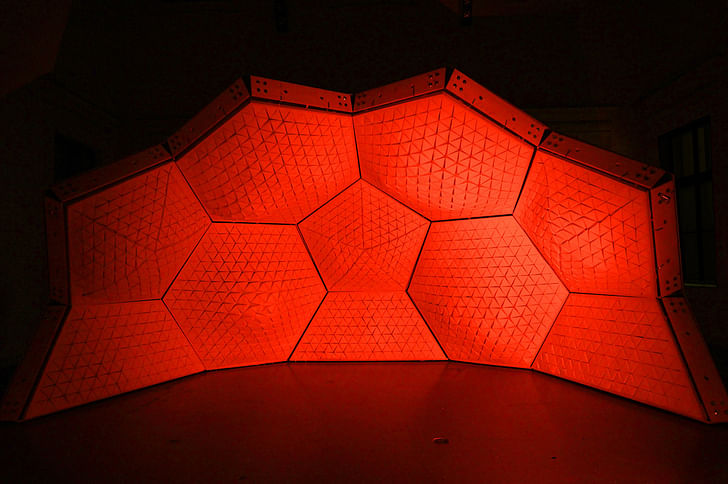
ShowCase is an on-going feature series on Archinect, presenting exciting new work from designers representing all creative fields and all geographies.
We are always accepting nominations for upcoming ShowCase features - if you would like to suggest a project, please send us a message.
Turkish-born architect Guvenc Ozel of Los Angeles/Istanbul-based Ozel Office Inc., Assistant Professor at University of Applied Arts in Vienna, created an interactive installation called “Cerebral Hut”, in collaboration with designer Alexander Karaivanov and media artists Jona Hoier and Peter Innerhofer.
Currently on view until December 12th at Istanbul Museum of Modern Art, it is exhibited in Istanbul Design Biennial “Musibet” show curated by Turkish Architect Emre Arolat, and is part of a group show called “Smudged”, co-curated by Esra Kahveci.
Cerebral Hut is an interactive installation that explores the relationship between architecture, movement and human thought.
Project Description from Guvenc Ozel:
We traditionally assume that the built environment, whether in the architectural or the urban scale influences our psyche. What if we can reverse that relationship? What if a kinetic architecture could establish a direct connection between the thoughts of its user and itself in order to reconfigure its physical boundaries accordingly?
What if architecture could be form without form?
Liberation of form from form is the liberation of architecture from its physical context and the outside forces that determine its boundaries; a space that has silhouette but no figure. A kinetic architecture, by its ephemeral, seemingly amorphous yet programmed behavioral iterations is bound to “travel” between a multiplicity of such “contexts”. An architecture with a transforming design boundary with its outside world continuously contextualizes its context and content meanwhile disperses it. By allowing itself to be shaped by multiplicity of external forces, it gives form to its user and his/her environment. Form without form is not form without context, content or intent. It is design-space that temporally re-calibrates its relationship with the outside world, repeatedly and through time, either by actively transforming its physical and conceptual boundaries, or through translating its phenomenological perception by the user. That is precisely why “The Cerebral Hut” is content without context par excellence, as context is not a paradigmatic constant.

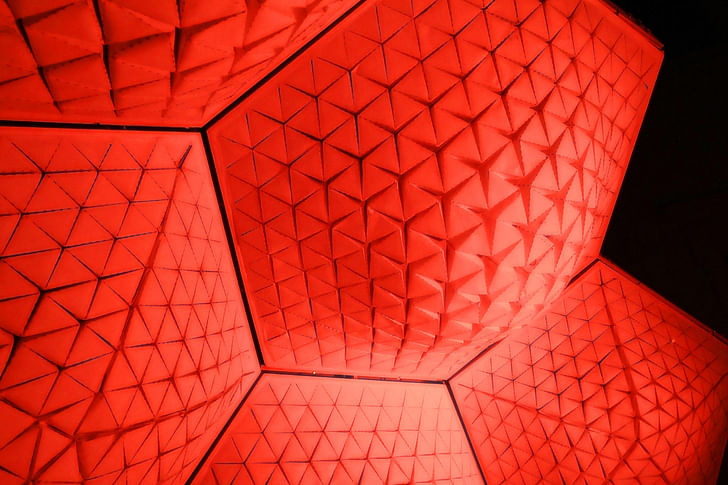
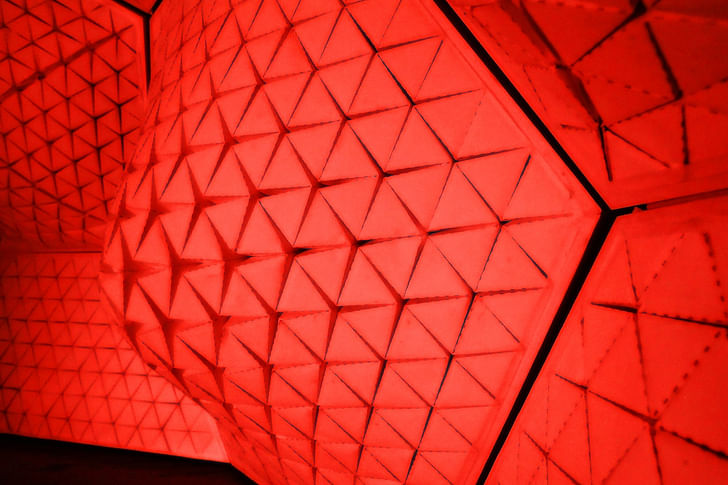
In order to create a space that is reactive to brain activity, the team hacked a commercially available device that can measure concentration levels and blinking, interpreted these data thresholds and wrote scripts that would translate them into motion. A research on different folding patterns and geometric structures lead to the creation of an environment that can act as a vessel for movement. As a result, Cerebral Hut became a game-space where the user controls the physical boundaries of his environment by his thoughts. As the user engages in activities that increases concentration levels, such as imagining movement, the environment responds real time and changes its configuration. Cerebral Hut plugs into a vein of contemporary research that explores kinetic environments and the relationship between technology, movement and space, but it is the first of its kind that creates a moving architecture that directly responds to human thought. And consequently it creates a collective architectural form, which questions the static notions of space and conclusive perceptions of design. The Cerebral Hut has no final, or ideal design-form, its interior and exterior is in constant transformation triggered by user participation.
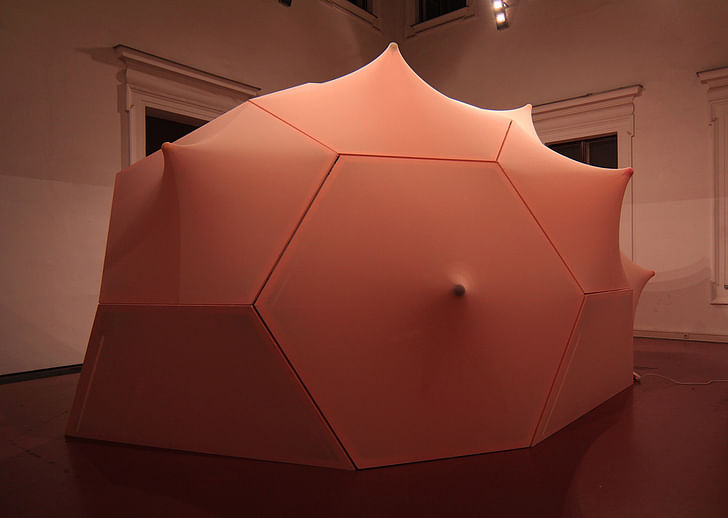
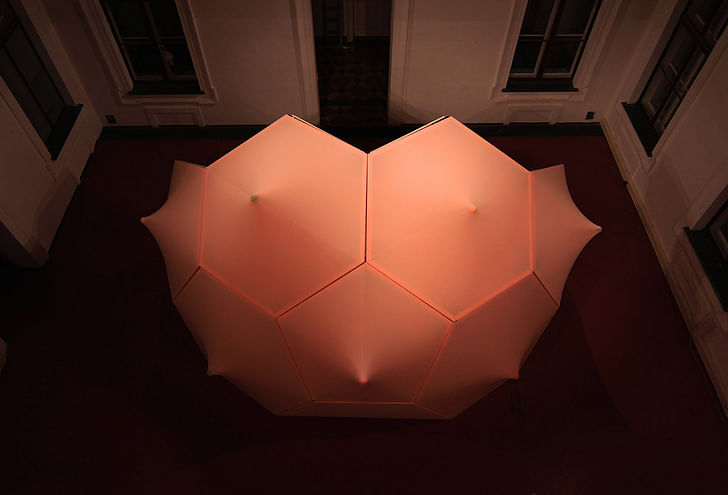

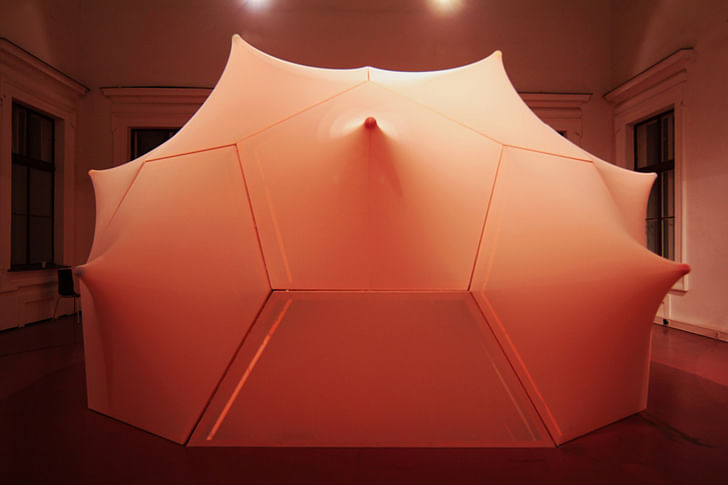
Project Details:
Design, Research: Guvenc Ozel, Alexandr Karaivanov
Programming, Mechanical Design: Jona Hoier, Peter Innerhofer
Installation Team: Guvenc Ozel, Alexandr Karaivanov, Lena Krivanek, Peter Innerhofer
Administrative Support: Alexandra Graupner, Sabine Peternell
Special Thanks to: Greg Lynn, Gerald Bast, Klaus Bollinger, Esra Kahveci, Onur
Sönmez
Istanbul Design Biennial is organized by Istanbul Foundation for Culture and Arts.
Cerebral Hut is made possible with support of University of Applied Arts Vienna, Institute of Architecture and Istanbul Foundation for Culture and Arts.
2 Comments
Congrats, Guvench. Very cool.
nice the 's
Block this user
Are you sure you want to block this user and hide all related comments throughout the site?
Archinect
This is your first comment on Archinect. Your comment will be visible once approved.